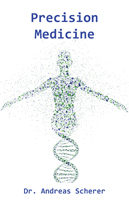Getting the NGS wet bench process right is not a small undertaking. Targeted NGS assays such as multigene panels or exome sequencing allow for the targeted analysis of genomic regions that are of particular interest. For every sample type, e.g. blood, formalin-fixed paraffin-embedded specimens, saliva etc, there must be a detailed protocol in place outlining how each sample type is going… Read more »
We have come a long way since Next-Generation Sequencing (NGS) evolved as a set of technologies in the 1970s. The higher throughput and rapid reduction of costs associated with NGS have lead to the accelerated adoption of clinical testing that we are experiencing today. Currently, it is applied to analyze inherited diseases, tumors, hematologic malignancies and infectious diseases. It is… Read more »
The adoption of genetic services is key to our ability to provide personalized medicine in the future. The goal is to better diagnose diseases, predict their outcome, and choose the best possible care option for a patient. We still have a long way to go to achieve this goal. While there is agreement about the ultimate goal, there is still… Read more »
Today, we launched our eCommerce Store. With this capability we respond to our customers requesting a simplified way to conduct business with us. Here is the background on this latest development. As we continue to grow in the genomics space, the needs of our clients fall really into two categories. On one hand, there are clients who want convenient access to our… Read more »
Customer success is very important to us at Golden Helix. Every month we showcase their success by putting together a blog post highlighting the most recent publications. We have been compiling this list since 2003 (you can find the full list here). Today, I am very honored to announce that the Golden Helix software has assisted in one thousand publications. We have enjoyed… Read more »
In 1914, the German cytologist Theodor Boveri coined the phrase “Cancer is a disease of the genome”. At this time, his ideas were as equally revolutionary as they were highly contested. Fast forward. More than a hundred years later, Next-Generation Sequencing effectively permits a highly sensitive analysis of cancer cells. It can help us to understand mutations associated with cancer… Read more »
The Golden Helix Soccer Team I recently received a very special email from a long time Golden Helix customer, Dr. Vanessa Hayes of the Garvan Institute of Medical Research in Sydney, Australia. In 2010 Dr. Hayes, then of the J. Craig Venter Institute, joined several colleagues in collaboration on The Southern African Genome Project. The project was aimed at including African genomes in existing… Read more »
So, why are we launching a new data warehouse product? Why did we build VSWarehouse? According to Grand View Market Research, the next generation sequencing (NGS) market size was $2.0 billion (USD) globally in 2014. This number is expected to grow from 2015 to 2022 at an annual rate of about 40%. What drives this phenomenon is the increasing number… Read more »
Golden Helix in 2016 We had a terrific year 2015. It was the year in which we got serious about the clinical testing market. We successfully continued on the path of attracting more referenceable clients such as University of Iowa, Baby Genes, Prevention Genetics and many more. We rounded out our VarSeq suite by adding more clinically relevant features and… Read more »
The next release of VarSeq will ship a new product that is highly relevant to our customers in clinical testing labs. Via VSReports, VarSeq now has the ability to generate clinical-grade reports. These reports are fully customizable, containing focused and actionable data. VS Reports ships with report templates that are modeled off of the ACMG guidelines, the de-facto gold standard… Read more »
Precision Medicine e-Book “It’s far more important to know what person the disease has than what disease the person has.” – Hippocrates (460 BC – 370 BC) Almost 2,500 years ago, Hippocrates captured one of the key principles underlying precision medicine. In the 21st century we take the understanding of the individual characteristics of a person to a new level…. Read more »
Recently, Golden Helix, Inc. announced the addition of VSPipeline to our VarSeq software suite. VSPipeline is a command-line interface that will allow high throughput environments the ability to tap the full power of VarSeq’s algorithms and flexible project template system from any command line context, including existing bioinformatics pipeline. So, what is the big deal? Here are the top five… Read more »
Regulatory Issues Regulatory bodies such as the Federal Drug Administration (FDA) already have a full plate. In the US, FDA-regulated products account for 20 percent of each dollar spent by American consumers each year. More specifically, the work of the regulatory authorities include the following: Carefully considering benefits and risks when evaluating medical products Staying on top of rapidly advancing scientific innovations… Read more »
The Educational Challenge Precision medicine will fundamentally change how health care is practiced. Of course, we have a long way to go. For most practitioners today, their knowledge of the human genome was established many years ago. However, new therapies and diagnostic methods are pouring in on a daily basis. So, how do we make sure that the current and… Read more »
Bioinformatics Pipelines and Systems Infrastructure The genetics industry is undergoing a fundamental shift from a clinical science focus to a bioinformatics focus. Genetic services require a greater level of data analytics sophistication than is required for other laboratory testing. Currently, data generated by new tests overwhelms current information technology systems and human interpretation capabilities. This is one of the reasons… Read more »
Adoption by Patients and Health Care Professionals Precision Medicine leverages the most innovative technology advances in the field of genetics. The concept is “en vouge”! We know that the science will give us increasingly better treatment options. I have covered this in my previous blog post. But does it really matter? Precision medicine only will become a reality if both… Read more »
Tailoring diagnostic and therapeutic strategies Many have called Sir William Osler (1849-1910) the “Father of Modern Medicine”. He was one of the four founding professors of Johns Hopkins Hospital where he was instrumental in creating the first residency program for the specialty training of physicians. He brought medical students from the classroom to the bedside for clinical training. He shared… Read more »
Reimbursement and Cost – Precision Medicine Part II The promise of Precision Medicine is to leverage highly targeted therapies for the benefit of the patient. By understanding better what makes us unique and leveraging our genetic make up, we hope to improve the outcome for the individual. Now, this blog is focusing on one issue that we collectively have to… Read more »
Precision Medicine Initiative On January 30, 2015, the Precision Medicine Initiative was announced by President Obama. Many in our field, researchers and clinicians alike, recognize that such a program would bring additional funding into our space to design, develop and implement new diagnostic tests that are aiding physicians in their practice of precision medicine. Here is what we know. Led by the National Institutes of Health (NIH),… Read more »
Last week we conducted a webcast on “Cancer Gene Panels”; you can find the recording here. We had some excellent questions which we answered during the webcast and a few more that we didn’t get to in the allotted time. Please find answers to those questions here: 1. Are Cancer Gene Panels just another stepping stone on the way to… Read more »


















